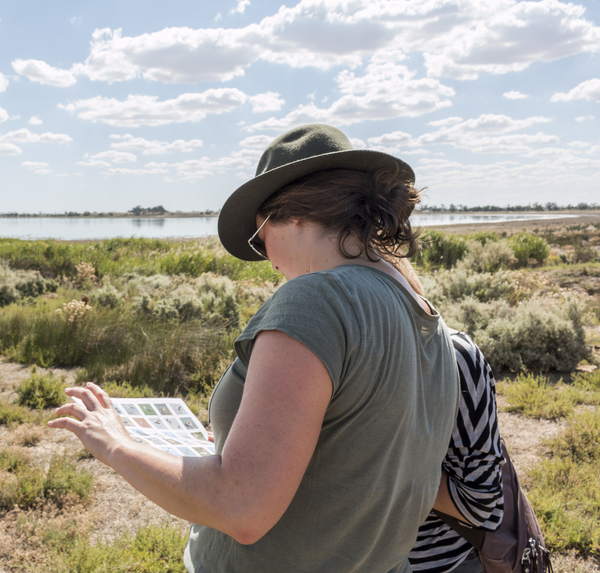Volunteer birdwatchers are giving waterway managers a vital insight into how water for the environment is helping to protect, restore or enhance wetlands and sustain waterbird populations.
Lake Cullen is one of 23 wetlands forming the internationally important Kerang Wetlands which occurs in the larger Central Murray wetlands system.
In 2016 and 2017, North Central CMA delivered environmental flows to Lake Cullen to provide a breeding ground for aquatic plants and waterbugs, which in turn would result in a food boom for birds.To find out if this was successful – and provide information that can guide future deliveries of water for the environment to Lake Cullen – Birdlife Australia teamed up with the VEWH and North Central CMA in February 2018 to hold a ‘Waterbirds of Lake Cullen’ training workshop and field trip for the local community.
Over 50 people from diverse backgrounds attended the workshop, where they gained knowledge from Birdlife Australia and the CMA about the importance of environmental watering to wetlands, how to identify birds, and how participants could contribute to monitoring and conservation. Since the workshop, information has been flowing into Birdlife Australia’s national database from birdwatchers in the broader Kerang
area. Five of these volunteers – including four locals who had not previously been involved in the project – signed on as monthly waterbird monitors.

Identifying birds at the ‘Waterbirds of Lake Cullen’ field trip
The records that the birdwatchers have collected are a resounding endorsement of both the success of the watering event and the invaluable contribution that citizen scientists can make to environmental management. Up to 18 threatened species were recorded during the monthly bird counts to June 2018, including freckled ducks, great egrets, little egrets, Australasian bitterns and a pair of brolga. Water for the environment also assisted breeding in six species at Lake Cullen, including the threatened magpie goose. Furthermore, close to 27,000 waterbirds were recorded at Lake Cullen during January and March 2018.
Some of the most exciting observations were of international migratory species which visit Australia from their breeding grounds in the northern hemisphere. These included a black-tailed godwit, which is very rare in Victoria and is listed as a vulnerable species in Victoria.
The most exciting outcome is that citizen scientists have helped to not only record these species, but also identify important habitat needs. Their observations, along with scientific data collected by North Central CMA, gave the CMA and the VEWH the information they needed to deliver more water for the environment into Lake Cullen in the spring of 2018, giving the birds – and the volunteers observing them – a very welcome boost. Following the top-up in October 2018, 29,600 waterbirds were recorded during the November 2018 count.